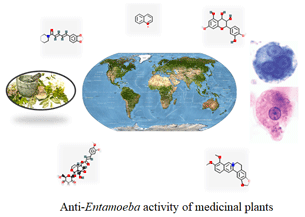Article contents
A systematic review of anti-Entamoeba histolytica activity of medicinal plants published in the last 20 years
Published online by Cambridge University Press: 04 February 2021
Abstract

Amoebiasis has emerged as a major health problem worldwide. It is endemic in the present scenario is different and sub-tropical regions especially in Asia, Latin America and also in Africa. Causative of amoebiasis is a protozoan known as Entamoeba histolytica. We screened all the databases such as PubMed, Science Direct, Medline and Google Scholar by using the keywords ‘anti-Entamoeba histolytica activity of medicinal plants, anti-Entamoeba histolytica activity of herbal drugs, the anti-amoebic activity of natural drugs’. In the present study, we found 7861 articles, where all articles were screened for bias analysis and included 32 full-matching articles in total reporting the use of medicinal plants as a remedy for amoebiasis. Through these articles, we found 42 herbs having anti-amoebic activity. In bias analysis, we also found four articles under high bias risk. In our study, seven medicinal plants were concluded to possess the most potent anti-amoebic activity based on their IC50 value, which was less than 1 μg mL−1. On bias analysis, we found four articles with high bias risk, hence these studies can be repeated for better results.
- Type
- Review Article
- Information
- Copyright
- Copyright © The Author(s) 2021. Published by Cambridge University Press
References
- 10
- Cited by





